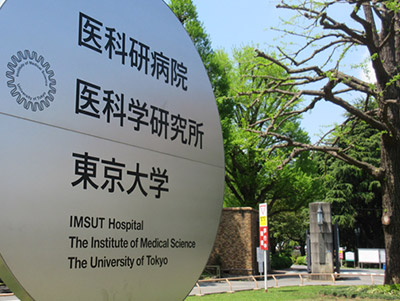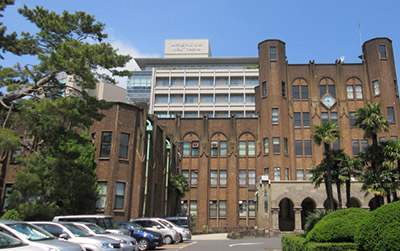Research Projects
1 Generating Human Organs / Cells in an Animal Body
Discovery of iPS cell technology has enabled regenerative medicine using patient's own stem cells. However, practical application of cell therapy using the cells differentiated from pluripotent stem cells still faces many challenges. Especially, insufficient functionality due to the immature cells and the high cost or the therapy are the major issues of the practical application. It is also difficult to generate organs inside a test tube, and many patients die while waiting for transplantable organs. In order to overcome these challenges, we are trying to generate organs and cells using the animal's biological environment. For example, we have discovered that functional human hematopoietic stem cells can be induced by introducing pluripotent stem cells in an animal body. Furthermore, we have demonstrated that transplanting pluripotent stem cells into animal embryos that are genetically modified to prevent the formation of specific organs can form organs derived from the transplanted stem cells. We have reported that this method can be applied to the organ generation between two different species, such as mouse and rat, and can be applied to large animals like pigs. Combined with the state-of-the-art developmental engineering technology, we are refining this organ / cell generation method and we believe we can produce low cost, functional and transplantable human organs / cells in the animal body in the future.
2 Basic research on hematopoietic stem cells and its application to gene and cell therapy
Hematopoietic stem cell transplantation is an effective treatment for serious blood diseases. However, the transplantation requires matching of histocompatibility, and finding the matched donor is a big challenge. Also, strong side effect of radiation, which is performed as a pretreatment before transplantation, is another problem of hematopoietic stem cell transplantation; limiting its use for the elderly and the patients with severe autoimmune diseases. Under such circumstances, development of a new method for amplifying hematopoietic stem cells in vivo and in vitro and development of safer hematopoietic stem cell transplantation method are desired.
We have contributed to the research of hematopoietic stem cells by developing a number of original technologies. By establishing a method of purifying hematopoietic stem cells, we have developed a transplantation method with a single hematopoietic stem cell. This led to the analysis of hematopoietic stem cells at single cell level, and it has enabled us to identify a novel differentiation pathway of hematopoietic cells. We have discovered signaling molecules critical for the maintenance of hematopoietic stem cells in bone marrow niche, the microenvironment where hematopoietic stem cells can self-replicate while maintaining the multilineage differentiation capability. Based on those continuous efforts, we are the first who have succeeded in deriving transplantable hematopoietic stem cells from iPS cells. In addition, we have identified candidate factors that amplify hematopoietic stem cells. Our goal is to establish a culture system for hematopoietic stem cells to develop a new method of gene therapy for various blood diseases.
Click here for details
http://www.ims.u-tokyo.ac.jp/saisei/
3 Development of Novel Immunotherapy Using iPS Cell Technology
We established iPS cells from antigen-specific cytotoxic T cells (CTLs) (T-iPSC) and succeeded in redifferentiating antigen specific CTLs from the T-iPS. Rejuvenated CTLs showed higher proliferation capacity and telomere length extension compared with the original peripheral blood derived CTLs. It was then confirmed that the EB virus-specific CTL derived from the iPSCs actually reduces EB virus-infected tumor efficiently in 2015. We are now preparing for doctor-initiated joint clinical trial with Juntendo University. To ensure patients’ safety, we have implemented a cell death induction system with the suicide gene iCaspase 9 so that the symptoms can be eliminated when the side effects develop. Once you make it to T-iPS, you can store them or re-create as many rejuvenated CTLs as you need, so you can administer the T-iPS until the tumor disappears. Eventually, we may be able to provide a panel of CTLs to various tumors and viruses as “off-the-shelf” products. With this technology, we believe we can provide novel, effective and safe immunotherapy that is different from conventional CTL therapy and CAR-T cell therapy for practical treatment.




